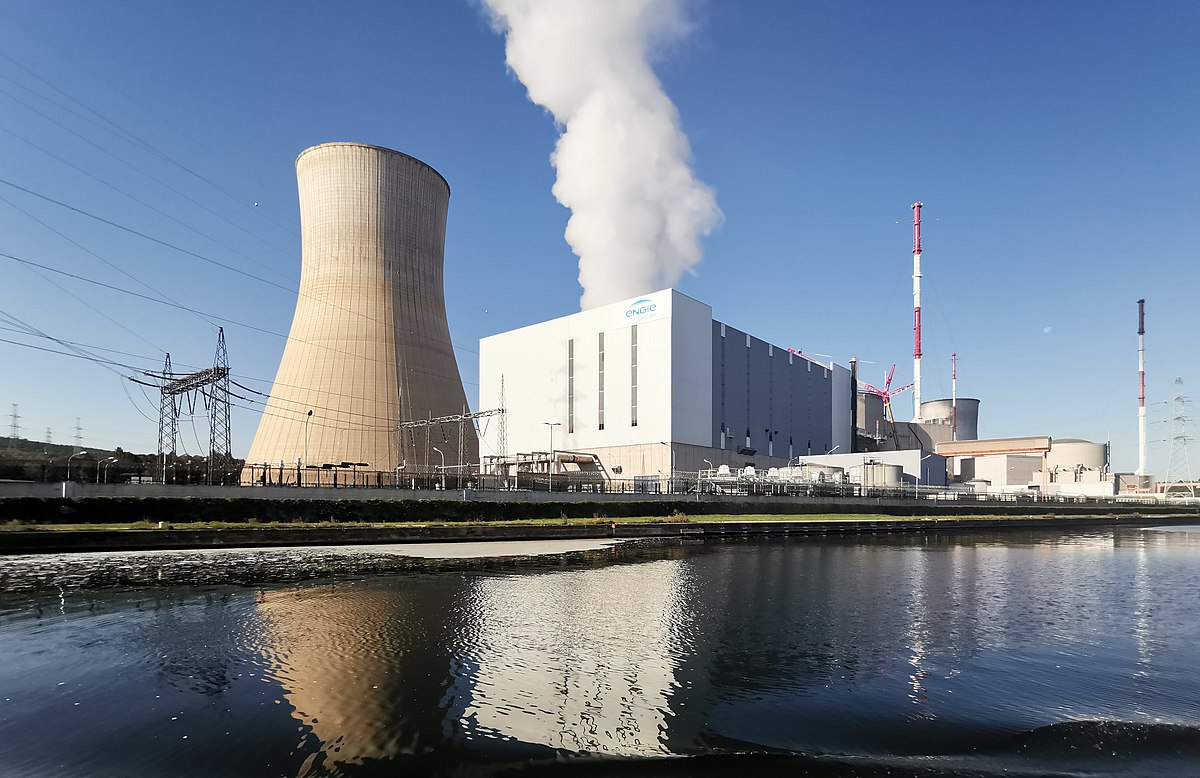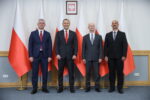The victory of the conservatives of Jarosław Kaczyński’s party in 2015 in Poland signaled Warsaw’s retreat from the pro-Russian energy policy of 2007-2015, carried out by the liberals of Donald Tusk’s party – writes writes Janusz Kowalski in The Warsaw Institute Review.
On November 16, 2015, Beata Szydło became Prime Minister of Poland. In October 2015, the center-right Law and Justice Party (PiS) defeated the liberal Civic Platform (PO) of Donald Tusk, the current President of the European Council, after eight years in power. The PiS electoral victory in 2015 was crucial for energy security, not only in Poland, but also in East-Central Europe. Conservatives under the leadership of the PiS President (former Prime Minister of Poland in 2006-2007) Jarosław Kaczyński supported by the President of Poland Andrzej Duda (also of PiS) from the beginning sought dynamically to make Poland and this part of Europe energy independent from Russian oil and gas. PiS politicians see a strategic, geopolitical partner in the energy sector for Poland in Washington D.C., and not in Berlin or Moscow, the latter of which are carrying out a project regarded by some as dangerous to the energy security of East-Central Europe, by building a northern corridor for the transport of Baltic Sea natural gas from the Russian Federation (Nord Stream), bypassing Poland and Ukraine.
Lech Kaczyński’s Testament
More than 25 years after the fall of communism, East-Central Europe is still heavily dependent on hydrocarbon supplies from Russia. Poland consumes about 15 billion cubic meters of gas per year, while domestic gas production is only four billion cubic meters. Approximately ten billion cubic meters of the “blue fuel” are imported by the government-controlled Polish Oil and Gas Company (PGNiG) as part of a long-term gas contract with Gazprom, valid until December 31, 2022 (the Yamal Contract). PGNiG also has a 20-year contract with Qatargas in its portfolio, to receive about 1.5 billion cubic meters of gas after regasification. Meanwhile, there is a similar dependence on Russian crude oil. Two Polish oil companies: Orlen in Płock and Grupa Lotos in Gdansk, import nearly 90 percent of crude oil processed in Polish refineries from the Russian Federation. Immediately after taking office in autumn 2015, Prime Minister Beata Szydło returned to the program of diversification pushed by the PiS governments in 2005-2007 under the auspices of the then Polish President Lech Kaczyński. Lech Kaczyński’s program of independence from Russian hydrocarbon supplies, coordinated by Dr. Piotr Naimski, Secretary of State at the Ministry of the Economy of Poland, counted on the realization of three infrastructure projects, strategic for Europe as a whole, only one of which has been thus far completed.
Poland’s program to become energy independent from natural gas deliveries rested on two pillars. The first of these was the construction of the only Baltic Sea LNG terminal on the Polish coast (Świnoujście) and the second one – the construction of a gas connection from Poland through Denmark, to natural gas deposits in Norway. The energy security of Poland and Europe in the oil sector was to be strengthened by the construction of a corridor to transport oil from the Caspian Sea via Azerbaijan, Georgia and Ukraine, all the way to the Polish oil terminal in Gdańsk. From Gdańsk, the oil was to be exported further to customers in Europe and worldwide, including PKN Orlen’s Mažeikiai refinery (Republic of Lithuania). At an energy summit in Kraków in May 2007 and at another in Vilnius in October 2007, President Kaczyński effectively united the leaders of Azerbaijan, Georgia, Ukraine and Lithuania around the project to build a transport corridor for Caspian oil along the Odessa-Brody-Płock-Gdańsk route. The personal involvement of the President of Poland as the leader of East-Central European countries defending Georgia’s independence during the Russian Federation’s invasion of the country in August 2008 resulted in part from the conviction of the need to defend the strategic interests of Poland, by aiming to build channels for the import of hydrocarbons into Europe, independent of Russia.
The implementation of these three key infrastructure investments: the construction of the LNG terminal in Świnoujście, the Odessa-Brody-Płock-Gdańsk oil corridor and the gas connection of Poland-Denmark-Norway, was to end in 2012-2014. Unfortunately, the plan to make East-Central Europe independent of Russian natural gas and crude oil was thwarted by the electoral victory of the Civic Platform in the accelerated parliamentary elections of autumn 2007.
Tusk’s Russian Turn
Civic Platform leader Donald Tusk, who became prime minister of Poland in autumn 2007, immediately announced a political reset in bilateral relations with Moscow. Just a few weeks after the Civic Platform came to power, the project to build a gas connection with Norway, which according to the PiS government schedule was to be ready by the end of 2010, was halted. The news of Poland’s withdrawal from the construction of an independent north-south gas connection independent of Russia was most pleasing to the Kremlin and Gazprom, the former of which controls the latter. Another gift to the Russian Federation from the new Polish government was the limitation of Warsaw’s activity within the EU in blocking the construction of the first section of the Nord Stream gas pipeline. In the international arena in 2006-2007, Jarosław Kaczyński’s government effectively blocked the construction of the first part of the German-Russian Nord Stream pipeline, the construction of which is tied to a strategic plan to exclude the transmission of Russian natural gas to the European Union through Poland, Belarus, Ukraine and Slovakia. Not only did the PO Government not take advantage of the opportunity to block Nord Stream, but it also agreed to the shallow placement of the first section of the pipeline at the bottom of the Baltic Sea, thus limiting the prospects for expansion of the Polish port in Świnoujście, which may have problems with accepting some of the largest ships in the world. In 2011, one of the leaders of the Law and Justice opposition, Joachim Brudziński, spoke candidly about the “quiet consent” of the PO government to Nord Stream.
Donald Tusk’s government also blocked the construction of a corridor for the transport of oil along the Odessa-Brody-Płock-Gdansk route. Thus, the efforts of President Lech Kaczyński, who was backed by the U.S. government, and who gathered the leaders of the post-Soviet republics around this project, were wasted. In the years preceding the Russian invasion of Ukraine, Azerbaijani oil reached Ukrainian and even Belarusian refineries, but never to the Polish refineries in Płock (PKN Orlen) and Gdańsk (Lotos Group). Another blow to Polish plans to make its economy independent from Russian gas was the signing in October 2010 of a governmental annex to the long-term gas contract, called the Yamal Contract, between Warsaw and Moscow. Under the agreement, Poland increased its dependence on Gazprom by more than two billion cubic meters of natural gas annually, all the way until 2022. The government in Warsaw actually gave Gazprom control over the strategic company Europol Gaz, which owns a 660-kilometer section of the Yamal gas pipeline, and sends nearly 28 billion cubic meters of natural gas to Germany, France and other Western European countries, through Poland. Only thanks to the determination of President Kaczyński, who in the course of the Polish-Russian gas negotiations from early 2009 to the fall of 2010, died in as-yet unexplained circumstances in the Smoleńsk catastrophe on April 10, 2010, and the president of the opposition PiS party, Jarosław Kaczyński, was a long-term gas contract between Poland and the Russian Federation not extended for another 15 years from 2022 to 2037. The extension of the Yamal agreement, which as a relic of the Soviet era was concluded at the governmental rather than a business level, was the initiative of the PO government. If in 2010 the long-term gas contract with Russia had been extended until 2037, Poland would not have been able to liberate itself from the monopolistic dictates of Gazprom for several decades. Fortunately, in late 2008, the PO government decided to continue building the LNG terminal in Świnoujście. According to the PiS government’s plans, the LNG terminal was meant to be finished by the end of 2012. The construction of the terminal was delayed from one year to the next, while increasing dependence on Gazprom at the start by the PO government in the autumn of 2010 limited the possibilities of importing LNG after its planned start-up. The Russian turn in Poland’s energy policy by Donald Tusk’s government was even visible in the electric energy sector. In 2012, the government suspended the construction of a coal-fired power plant in Ostrołęka, which was supposed to guarantee the security of the electricity supply to the north-eastern part of Poland bordering Lithuania, Belarus and the Russian Federation (Kaliningrad Oblast). An alternative to the Polish power plant was electricity delivered from a planned nuclear power plant in Kaliningrad.
Return to an active energy security policy
After the victory of the center-right in autumn 2015 in Poland, an immediate return to an active energy policy took place in Warsaw. Prime Minister Beata Szydło’s government, in its first weeks of work, confirmed that the aim of Polish policy is to return to, after eight years, the construction of a gas connection with Norway (Norwegian Corridor). Greatly delayed in relation to the plans of 2005-2007, the LNG terminal in Świnoujście began operations in June 2016, the namesake of which became the initiator of its construction, President of Poland Lech Kaczyński. In 2016, construction was resumed on the power plant in Ostrołęka, crucial for the security of electricity supply in north-eastern Poland.
Unfortunately, due to the ongoing occupation of part of the territory of Ukraine by Russia, resuming the construction of the Odessa-Brody-Płock-Gdańsk oil corridor does not seem possible in the foreseeable future.
Northern Gateway vs. Nord Stream
To make Poland completely independent of Gazprom’s potential blackmail, the construction of the Norwegian Corridor must be finished by the end of 2022, when the Yamal Contract expires. When the Norwegian Corridor is finished, ten billion cubic meters of natural gas will be transported into Poland annually, which will reach the receptive markets of East-Central European countries, including Ukraine. The Norwegian Corridor is defined as the connection of the Norwegian continental shelf, through Denmark, with the Polish coast. It consists of five elements. The first is the construction of a tie-in on the Dutch side to the Norwegian delivery system in the North Sea, which will connect Denmark with Norway, and will enable the transmission of raw materials, including PGNiG’s natural gas. Another necessary precondition for the creation of the Norwegian Corridor is the extension of the existing transmission capacity in Denmark from the west to the east and the construction of an underwater gas pipeline at the bottom of the Baltic Sea between Poland and Denmark (the 200 km Baltic Pipe interconnector). The project is to be finalized by an expansion program for the Polish transmission system and the construction of a new gas depot.
The Norwegian Corridor is part, along with the LNG terminal launched in 2016, of a government project to build the North Gate, thanks to which this part of Europe will be effectively independent from gas supplies from Russia for the first time in its history. The North Gate is Poland’s effective response to the Russian-German plan for making part of Europe dependent on expensive Russian raw materials. At present, the LNG terminal in Świnoujście allows imports of up to five billion cubic meters of gas, and its expansion will increase Poland’s import capacity to 7.5 billion cubic meters. Although the construction of the Norwegian Corridor has been met with the official approval of the European Commission, the plans for making East-Central Europe independent from Gazprom’s monopoly are threatened by the construction of the second section of the Nord Stream pipeline, which is practically and effectively supported by bureaucrats in Brussels sympathetic to Gazprom. There is little doubt in Poland that if Nord Stream doubles its capacity from the current 55 billion to 110 billion cubic meters, gas shipments to Europe through Ukraine and Belarus will immediately be shut off. Through Nord Stream 2, Gazprom wants to consolidate its market share in Europe in the face of increasing competition from LNG and shrinking demand in the European Union, and above all, continue to dictate high prices to East-Central European buyers.
The tactical aim of Germany and Russia in the coming months is to guarantee a monopoly on the land transport of Nord Stream on German territory for the entire volume of gas sent from the Russian Federation by the northern pipeline. This may actually block the ability of other companies to freely use existing gas pipelines connected to Nord Stream. This is the context in which to interpret the European Commission’s decision of October 28, 2016 on the monopolization by Gazprom of the Nord Stream, onshore, OPAL gas pipeline running along the Polish-German border, with a capacity of around 36 billion cubic meters. Prime Minister Beata Szydło’s government has strongly expressed its concern to the European Commission, demanding respect for EU antitrust law against the German gas pipeline. In the event of a break in gas supplies from the east and the maintenance of Gazprom’s monopoly on the German gas pipeline, Polish energy security would be severely endangered. Similar action monopolizing gas transmission by Gazprom and its German partners is planned for the EUGAL gas pipeline, another inland, Nord Stream pipeline in Germany with a capacity of 55 billion cubic meters annually. Critics of the Nord Stream 2 project, led by the Polish European Commission, are convinced that further expansion of Russian Gazprom’s domination in East-Central Europe should be prevented. Among the countries insisting that the Nord Stream 2 project be consistent with EU law, besides Poland, are Slovakia, Lithuania, Estonia, Latvia, Romania, Denmark and Sweden.
Pivotal 2017
The center-right victory in Poland in 2015 reopened the possibility of breaking with Gazprom’s monopoly in East-Central Europe. In order to implement the plan for Poland’s independence from Russian gas and, based on the Norwegian Corridor and the expanded LNG terminal, building a gas hub for East-Central Europe, political decisions made at the end of 2017 in Poland will be key. This year, the final shape of the Norwegian Corridor should be decided upon with partners from Denmark and Norway.
Already looking ahead to 2022, an important element of the diversification of gas supplies to Poland will be the construction of an import network for LNG by PGNiG. The LNG sector is the only serious alternative in the event of the failure of the Norwegian Corridor project. That is why the Polish gas corporation is developing competencies in international LNG trade by opening offices in London for example. In addition, in March 2017, PGNiG signed another contract with Qatargas, the world’s leading LNG producer, under which Qatargas will increase the volume of LNG supplied to PGNiG to approximately 2.7 billion cubic meters, after regasification annually, until June 2034.
The greatest challenge however for the diplomats of East-Central European countries is to persuade the European Commission to refrain from further supporting Gazprom’s monopoly in this part of Europe, something Germany is keenly interested in along with Russia in their realization of the geopolitical project to build Nord Stream 2. Brussels poses a real and serious threat to plans for the energy independence of Europe, thanks to the North Gate built by Poland, based on the planned new gas connection with Norway and the expanded gas port in Świnoujście. The outcome of geopolitical clashes in the next few months between Warsaw, Moscow and Berlin, over the new and interconnected gas architecture in East-Central Europe, will determine whether or not this part of Europe will eventually become permanently energy independent from the Kremlin.
Open Season for Baltic Pipe will show if there is demand for Norway’s gas








